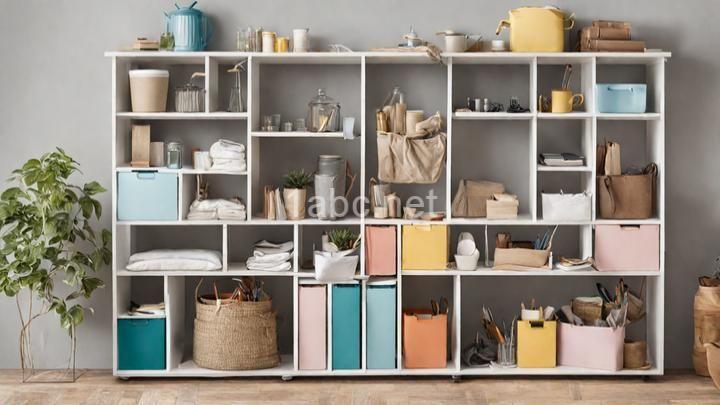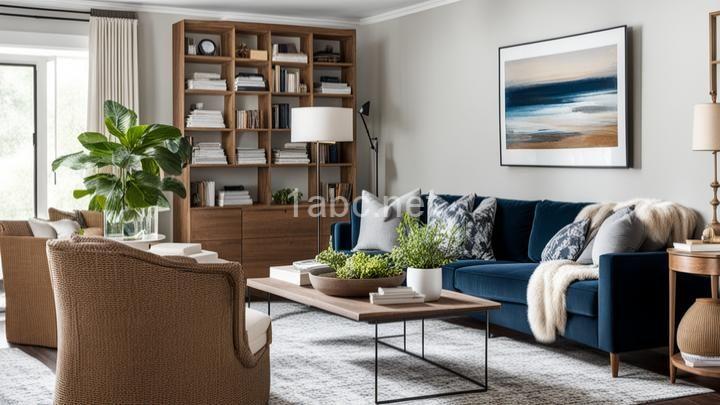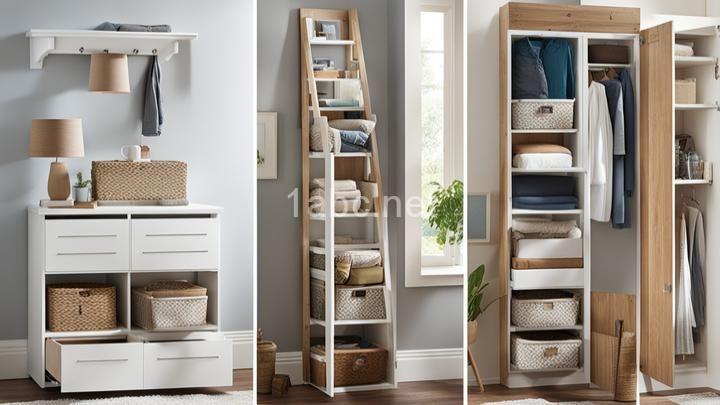Effortless Ways to Declutter and Reclaim Space in Your Home & Garden Storage

Introduction:
Welcome to our friendly guide on decluttering and reclaiming space in your home and garden storage! We understand that clutter can be a real headache, making it difficult to find things and creating a sense of chaos in your living environment. That's why we're here to help you tackle the clutter and create a more organized and peaceful space.
I. Assessing the Situation:
Before diving into the decluttering process, it's important to take stock of your current storage spaces. This includes both indoor and outdoor areas such as closets, garages, sheds, and garden storage units. By assessing the situation, you'll have a better understanding of which areas require the most attention and can prioritize accordingly.
II. Sorting and Categorizing:
Once you've identified the storage areas that need decluttering, it's time to roll up your sleeves and start sorting. Begin by emptying out each storage area, one at a time. As you go through the items, sort them into categories such as keep, donate/sell, or discard. This will help you make decisions on what to do with each item. To enhance organization, consider using clear bins or labels to easily identify the contents of each container.
Remember, if you haven't used an item in over a year, it might be time to let it go. Holding onto things we no longer use only adds to the clutter and takes up valuable space that could be better utilized.
III. Maximizing Vertical Space:
To make the most of your storage areas, it's essential to utilize vertical space. Install shelves, pegboards, or hanging racks to take advantage of the height of the room. By doing so, you can store rarely used items higher up while keeping frequently used ones within easy reach. In your garden shed, consider utilizing wall space for hanging tools or installing shelving units. This will free up valuable floor space and create a more organized and efficient storage area.
IV. Creative Storage Solutions:
Don't be afraid to get creative when it comes to storage solutions. Explore options such as under-bed organizers, ottomans with hidden compartments, or wall-mounted hooks. These clever storage solutions can help you maximize space and keep your belongings neatly organized. Additionally, you can repurpose everyday items into storage solutions. For example, mason jars can be used to store small hardware like screws or nails. Thinking outside the box and utilizing every nook and cranny of your home and garden will help you reclaim space and reduce clutter.
V. Maintaining Organization:
Decluttering is just the first step. To ensure your storage areas stay clutter-free, it's important to establish routines for putting things back in their designated places after use. Regularly review your storage areas to assess if any items have found their way back into the wrong spot. Consider implementing a "one in, one out" rule, which means that for every new item you bring into your home or garden, an old one must be donated or discarded. This rule helps prevent future clutter buildup and encourages you to be mindful of the things you bring into your space.
Conclusion:
In conclusion, decluttering doesn't have to be an overwhelming task. By following these effortless tips, you'll be well on your way to reclaiming space in your home and garden storage. Remember, an organized space leads to a more enjoyable living environment. So take action, start decluttering, and experience the peace and satisfaction that comes with a clutter-free home and garden. Happy decluttering!
Remember, we're here to support you every step of the way. If you have any questions or need further guidance, feel free to reach out to us. Together, we can create a space that is organized, functional, and brings you joy.
FREQUENTLY ASKED QUESTIONS
How can I declutter my home without feeling overwhelmed?
Decluttering your home can be a daunting task, but with a few strategies in place, you can tackle it without feeling overwhelmed. Here are some tips to help you declutter your home effectively:
-
Start small: Begin with one area or room at a time instead of trying to declutter your entire home in one go. This will help you stay focused and avoid feeling overwhelmed.
-
Set goals: Define what you want to achieve with your decluttering project. Whether it's creating more space, improving organization, or simply reducing the amount of stuff you own, having clear goals will keep you motivated.
-
Sort and categorize: Divide your belongings into different categories, such as keep, donate, sell, or toss. This will help you make decisions about what to keep and what to let go of.
-
Take breaks: Decluttering can be physically and mentally exhausting. Remember to take regular breaks to rest and recharge. This will prevent burnout and keep your motivation levels high.
-
Use a system: Establish a system for organizing your belongings. Whether it's using storage containers, labeling, or creating designated spaces for specific items, having a system in place will make it easier to maintain a clutter-free home.
-
Get support: Decluttering can be more enjoyable and less overwhelming if you have someone to help you. Enlist the support of a friend or family member who can provide encouragement and assistance during the process.
-
Let go of guilt: It's common to feel attached to certain items due to sentimental value or guilt. Remember that decluttering is about creating a space that brings you joy and serves your needs. Letting go of unnecessary items can be liberating and make room for new opportunities.
-
Celebrate small victories: Acknowledge and celebrate your progress along the way. Completing small decluttering tasks can give you a sense of accomplishment and motivate you to continue.
Remember, decluttering is a journey, and it's okay to take it one step at a time. By following these tips and maintaining a positive mindset, you can declutter your home without feeling overwhelmed. Good luck!
What are some effective storage solutions for small spaces?
When it comes to small spaces, finding effective storage solutions is key to maximizing your space and keeping things organized. Here are a few ideas to consider:
-
Utilize vertical space: Look for wall-mounted shelves and hanging organizers to make use of the vertical space in your small room. This will help free up floor space and keep your belongings within easy reach.
-
Opt for multi-purpose furniture: Invest in furniture pieces that serve multiple functions. For example, a storage ottoman can provide extra seating and also double as a place to store blankets or other items.
-
Use under-bed storage: The space under your bed is often overlooked, but it can be a great spot for storing items you don't need access to on a daily basis. Consider using under-bed storage containers or bags to keep things organized and out of sight.
-
Get creative with closet space: If you have a small closet, make the most of it by using space-saving hangers, hanging shoe organizers, and storage bins. You can also install additional shelves or hooks to maximize the available space.
-
Use door and wall organizers: Take advantage of the back of doors and walls by using door-mounted organizers or wall-mounted racks. These can be great for storing shoes, accessories, or small items like keys and mail.
-
Think modular: Look for storage solutions that can be customized and rearranged to fit your specific needs. Modular storage cubes or shelves can be arranged in different configurations to adapt to your changing storage requirements.
Remember, the key to effective storage in small spaces is to think creatively and make use of every available inch. By utilizing vertical space, investing in multi-purpose furniture, and finding clever storage solutions, you can create a more organized and functional living area.
How can I maintain an organized space once I've decluttered?
Once you've decluttered your space, maintaining an organized environment is crucial to ensure long-lasting results. Here are some tips to help you maintain an organized space:
-
Develop a daily routine: Establishing a daily routine will help you stay on track and prevent clutter from accumulating. Set aside a few minutes each day to tidy up and put things back in their designated places. Consistency is key!
-
Use storage solutions: Invest in practical storage solutions such as bins, baskets, and shelves. These will help you keep items organized and easily accessible. Labeling containers can also be a great way to quickly find what you need.
-
One in, one out rule: Adopt the "one in, one out" rule to prevent new clutter from entering your space. Whenever you bring in a new item, try to remove something else to maintain balance and avoid overcrowding.
-
Regular decluttering sessions: Schedule regular decluttering sessions to reassess your belongings and get rid of anything you no longer need or use. This will help you stay on top of clutter and prevent it from accumulating again.
-
Clean as you go: Make it a habit to clean as you go about your daily activities. For example, after using something, immediately put it back in its designated place instead of leaving it out. This small effort can make a big difference in maintaining an organized space.
-
Keep surfaces clear: Clutter tends to accumulate on surfaces such as countertops and tables. Make it a priority to keep these areas clear and free of unnecessary items. Use decorative storage solutions like trays or baskets to corral smaller items and give them a designated spot.
-
Involve everyone in the household: If you share your space with others, involve them in the organization process. Encourage everyone to take responsibility for their belongings and contribute to maintaining an organized environment.
Remember, organizing is an ongoing process. By implementing these strategies and staying consistent, you can enjoy a clutter-free and organized space for the long term.
How do I decide what to keep and what to let go of?
Deciding what to keep and what to let go of can be a challenging process, but with some thoughtful consideration, you can make the choices that are right for you. Here are a few steps you can take to help you in this decision-making process:
-
Evaluate the usefulness: Consider whether the item serves a practical purpose in your life. If it's something you use regularly or find valuable, it may be worth keeping. On the other hand, if it's been sitting unused or is no longer relevant to your current needs, it might be time to let go.
-
Assess the sentimental value: Some items hold sentimental value, reminding us of cherished memories or important milestones. While it can be challenging to part with sentimental belongings, it's important to consider if they still bring you joy or if they're simply taking up space. It's okay to keep a few sentimental items, but try to be selective and only keep those that hold the most significant meaning for you.
-
Consider the space you have: Take stock of the physical space available to you. If you're running out of storage or living in a cluttered environment, it may be time to declutter and let go of items that are taking up unnecessary space. Prioritize items that you truly need or genuinely love, and consider letting go of duplicates or things that no longer serve a purpose.
-
Reflect on your lifestyle and values: Your lifestyle and values can change over time, and it's essential to align your belongings with these changes. Consider whether the items you're holding onto still reflect who you are and the life you want to lead. Letting go of things that no longer align with your current self can be liberating and make room for new experiences and opportunities.
-
Take it one step at a time: Decluttering and letting go can feel overwhelming, especially if you have a lot of belongings. Start small by focusing on one area or category at a time. This approach allows you to make progress without feeling overwhelmed. Set realistic goals and celebrate your achievements along the way.
Remember, the decision of what to keep and what to let go of is highly personal. Trust your instincts and be gentle with yourself throughout the process. By carefully considering the usefulness, sentimentality, space, lifestyle, and values, you can make choices that help create a clutter-free and more meaningful environment for yourself.


